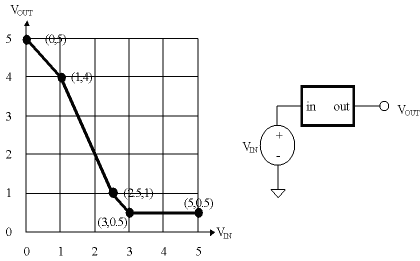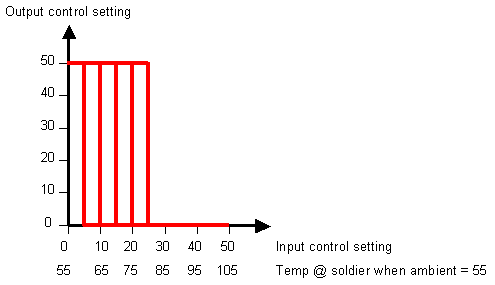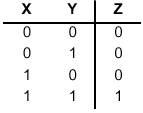
-
if VIN <= VIL then VOUT >= VOH, and
if VIN >= VIH then VOUT <= VOL.
 Can one chose a VOL of 0V for this device? Explain.
Can one chose a VOL of 0V for this device? Explain.
 What's the smallest VOL one can choose and still have the device obey
the static discipline? Explain.
What's the smallest VOL one can choose and still have the device obey
the static discipline? Explain.
 Assuming that we want to have 0.5V noise margins for both "0" and "1"
values, what are appropriate voltage levels for VOL,
VIL, VIH, and VOH so that the device
obeys the static discipline. Hint: there are many possible choices,
just choose one that obeys the constraints listed above.
Assuming that we want to have 0.5V noise margins for both "0" and "1"
values, what are appropriate voltage levels for VOL,
VIL, VIH, and VOH so that the device
obeys the static discipline. Hint: there are many possible choices,
just choose one that obeys the constraints listed above.
- VIN >= VIH implies VOUT <= VOL
- VIN <= VIL implies VOUT >= VOH
- VOL + noise margin = VIL
- VOH - noise margin = VIH
-
applying rule 3: VIL = 1V
applying rule 2 and looking at the VTC: VOH = 4V
applying rule 4: VIH = 3.5V
-
VIL = N + 0.5V
-
VIH = VIL + M = N + 0.5 + M.
-
VOH = VIH + 0.5 = N + M + 1.
-
VOH = VTC(VIL) implies N + M + 1 = VTC(N + 0.5) = 6 - 2*(N + 0.5)
VOL = VTC(VIH) implies N = VTC(N + 0.5 + M) = 6 - 2*(N + M + 0.5)

-
at point "B", the largest voltage we'll measure is 0.5 + N, i.e.,
the voltage we applied to the other end of the wire and the worst-case
noise perturbation.
referring to the VTC, with 0.5+N on the input we'll measure a voltage
of 4 - 2(N + .5 - 1) = 5 - 2N at the output (point "C").
at point "D", the smallest voltage we'll measure is 5 - 3N, i.e.,
the voltage we applied to the other end of the wire and the worst-case
noise perturbation.
finally at point "E" we'd want to measure 0.5V, i.e., a valid "0"
voltage level.


















